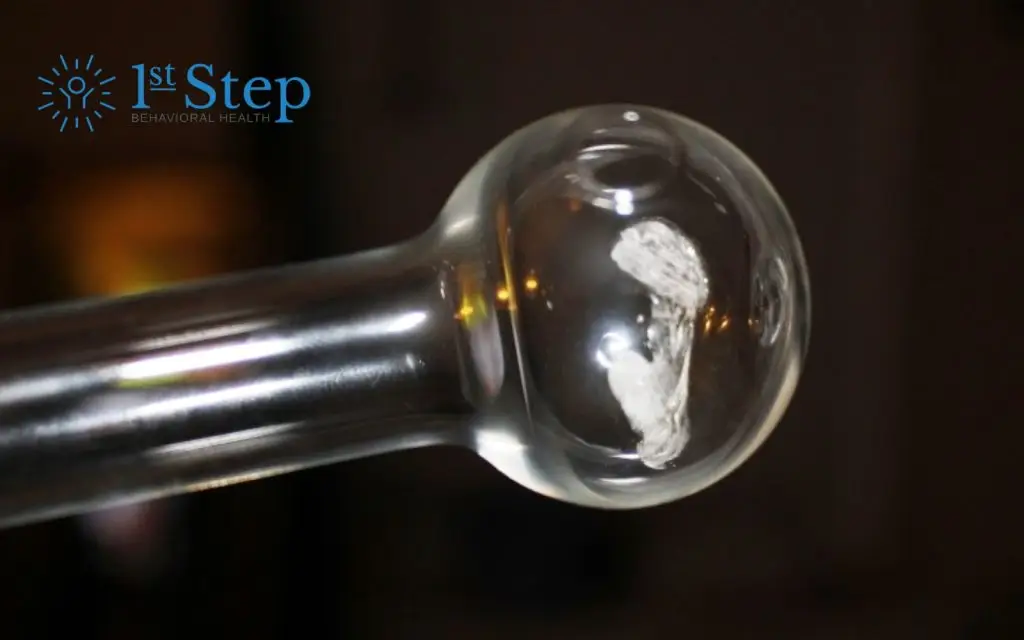Crack is a dangerous, illicit stimulant drug. It is a potent form of cocaine that can change how a person’s body and brain work. People who become dependent on crack may struggle to quit using it when they choose.
Seeking treatment early in an addiction can help people overcome it and move forward. The longer you wait to treat crack addiction, the harder it can be to safely stop using it and prevent relapse. Recognizing the signs of crack abuse can help you get treatment quickly.
This article will outline some of the ways to recognize crack abuse and addiction. You will learn:
- The effects and risks of crack abuse
- What a crack pipe looks like
- Signs of crack abuse
- How to treat crack addiction
- Where to find comprehensive substance abuse treatment
If you or someone you love abuses crack or other addictive substances, you are not alone. Find the compassionate, effective treatment you deserve at First Step Behavioral Health. Contact our intake team to learn about our programs or to schedule an intake assessment.
What is Crack?
Crack is a slang term for crack cocaine. Crack is an illegal stimulant drug created through a process involving adding chemicals to cocaine. Crack is usually a yellow, pink, or white solid crystal. It may also be available in powder or pill form. Users heat crack and inhale the vapors. The drug gets its name from the crackling sound it makes when people heat it.
Smoking crack puts the drug into the bloodstream quickly. The drug increases central nervous system (CNS) activity, resulting in intense stimulant effects.
Long-term crack abuse can lead to tolerance and physical dependence. People who develop crack addiction may require intensive treatment and continuing support to quit using it and avoid relapse.
The Effects and Risks of Crack
Smoking crack cocaine can cause intense short-term stimulant effects, including:
- Euphoria
- Elevated blood pressure
- Paranoia
- Increased energy
- More alertness
- Irritability
- Faster heart rate
- Dilated pupils
- Sensitivity to touch, light, sounds, and smell
Long-term crack abuse can lead to severe health complications, including:
- Crack cocaine addiction
- Cardiovascular problems
- Mental health conditions
- Respiratory and lung damage
- Excessive weight loss
- Malnutrition
Prolonged crack abuse can cause physical and mental symptoms of addiction, including:
- Tolerance (needing to use more to get the desired effects)
- Experiencing intense cravings for crack
- Having withdrawal symptoms when not using it
- Continuing to use crack even though it causes significant problems
People who abuse crack or powder cocaine may develop cocaine use disorder. People with substance use disorder (SUD) require intensive treatment programs and continuing support to stop.
What Does a Crack Pipe Look Like?
Recognizing common drug paraphernalia people use to smoke crack can help you identify crack abuse.
Crack pipes have a distinct appearance. Most crack pipes are glass. They may look like small glass tubes that are the diameter of drinking straws. Most crack pipes are clear glass, but some might be colorful, etched, or frosted.
Crack pipes may have a round end resembling a ball or a small bowl where people can put crack. You may notice blackening or other signs that someone has heated this end of the pipe.
People may also use a straight tube with a piece of steel wool inside to smoke crack. These tubes are usually thin and may resemble a test tube.
Generally, look out for glass pipes with burn marks. These may be a sign of crack abuse.
Recognizing the Signs of Crack Use
In addition to finding paraphernalia, there are other signs of crack abuse you can watch for. Crack use can change a person’s appearance, mood, behaviors, and more.
Some signs of crack abuse include:
- Significant changes in eating or sleep patterns
- New or worsening mental health symptoms
- Dilated pupils and bloodshot eyes
- Frequent hoarseness or sore throat
- Rapid speech
- Increased isolation
- Missing work or school, neglecting responsibilities, or giving up on relationships and hobbies
- Sudden or extreme weight loss
- Being dishonesty, sneaky, or secretive
- New or worsening financial or legal trouble
People may also exhibit crack withdrawal symptoms if they stop using it. These include:
- Anxiety
- Fatigue
- Poor sleep
- Mood swings
- Poor concentration
- Depression
- NIghtmares
People who abuse crack require treatment options to help them safely stop using this potent drug. Many treatment centers offer inpatient and outpatient programs to help people address the roots of their substance abuse.
Treating Crack Addiction
Many people require intensive treatment to overcome crack addiction. Comprehensive treatment programs typically include care from mental health and medical professionals, including:
- Medical detox programs
- Medications and medical care
- Behavioral therapies
- Individual therapy
- Family counseling
- Support groups
- Relapse prevention education
- Coping skills
- Holistic therapies like nutrition support, exercise, mindfulness, and more
- Aftercare support and programming
Overcoming crack addiction can be challenging, but treatment and support can help. Seek treatment for crack addiction as soon as you recognize the signs.
Find Treatment Now
If you or someone you love struggles with crack abuse or addiction, you are not alone. Contact the intake team at First Step Behavioral Health to learn about our support and treatment programs. You can reach out with questions, to verify your insurance coverage, or to schedule an intake appointment.
References:
- National Drug Intelligence Center: Crack Cocaine Fast Facts
- National Institute of Health (NIH): Crack cocaine use: a review of prevalence and adverse effects
Jump to a Section
Call (855) 425-4846
